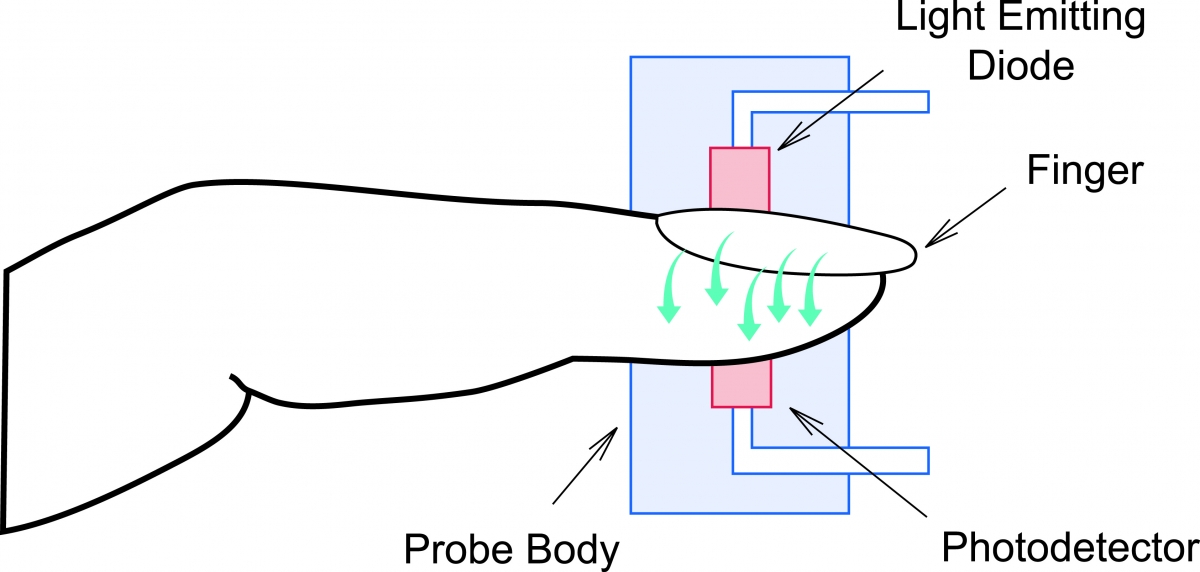Pulse oximeter is a painless and reliable method for clinicians to measure human blood oxygen levels.A pulse oximeter is a tiny device that usually slides over your fingertips or clipped to your earlobe, and uses infrared light refraction to measure the degree of oxygen binding to red blood cells. The oximeter reports blood oxygen levels through a measurement of blood oxygen saturation called peripheral capillary oxygen saturation (SpO2).

Does a pulse oximeter help catch COVID-19 ?
The new coronavirus that causes COVID-19 enters the human body through the respiratory system, causing direct damage to the human lungs through inflammation and pneumonia-both of which will have a negative impact on the ability of oxygen to absorb into the blood. This oxygen damage may occur in multiple stages of COVID-19, not just a critically ill patient lying on a ventilator.
In fact, we have already observed a phenomenon in the clinic. People with COVID-19 may have very low oxygen content, but they look very good. It is called “happy hypoxia”. The worrying thing is that these patients may be sicker than they feel, so they certainly deserve more attention in the medical environment.
This is why you may be wondering if a blood oxygen saturation monitor can help detect COVID-19 early.However, not everyone who tests positive for COVID-19 will have low oxygen levels. Some people may feel very uncomfortable due to fever, muscle pain, and gastrointestinal discomfort, but never show low oxygen levels.
Ultimately, people should not think of pulse oximeters as a screening test for COVID-19. Having a normal oxygen level does not mean that you are not infected. If you are concerned about exposure, formal testing is still required.
So, can a pulse oximeter be a useful tool for monitoring COVID-19 at home?
If a person has a mild case of COVID-19 and is self-treating at home, the oximeter can be a useful tool for checking oxygen levels, so that low oxygen levels can be detected early. Generally, the people who are theoretically most susceptible to oxygen problems are those who have previously suffered from lung disease, heart disease and/or obesity, and those who actively smoke.
In addition, since “happy hypoxia” may occur in people who may be considered asymptomatic, pulse oximeters can help ensure that this clinically silent warning signal is not missed.
If you test positive for COVID-19 and are concerned about any symptoms, please contact your healthcare provider immediately. From a lung health point of view, in addition to objective pulse oximeter measurements, I also suggest that my patients have difficulty breathing, severe chest pain, uncontrollable cough or dark lips or fingers, now it’s time to go to the emergency room .
For patients with COVID-19, when did blood oxygen saturation measurement begin to cause concern?
In order for the oximeter to be an effective tool, you first need to understand the baseline SpO2, and remember that the baseline readings may be affected by pre-existing COPD, heart failure or obesity.Next, it is important to know when the SpO2 reading changes significantly. When SpO2 is 100%, the clinical difference is practically zero, and the reading is 96%.
Based on experience, COVID-19 patients monitoring their clinical conditions at home will want to ensure that SpO2 readings are always maintained at 90% to 92% or above. If the number of people continues to drop below this threshold, a medical evaluation should be carried out in a timely manner.
What can reduce the accuracy of pulse oximeter readings?
If a person has circulatory problems with poor blood circulation in the limbs, such as cold hands, internal vascular disease or Raynaud’s phenomenon, the pulse oximeter reading may be falsely low. In addition, false nails or certain dark nail polishes (such as black or blue) may distort the readings.
I always recommend that people measure at least one finger on each hand to confirm the number.
Post time: Mar-17-2021

